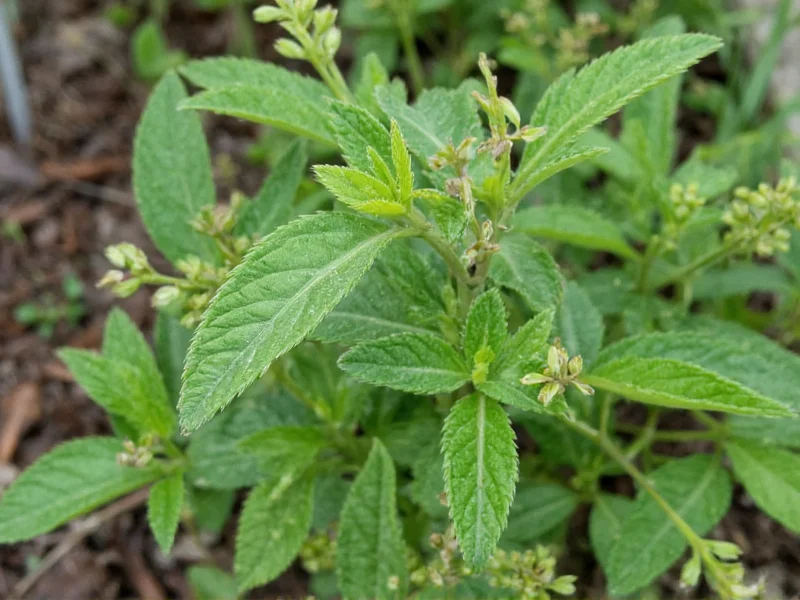As a culinary cornerstone, thyme enhances dishes ranging from roasted meats to vegetable stews. Its robust flavor withstands long cooking times, making it ideal for braises and soups. Chefs value common thyme for its pine-like aroma with subtle lemon notes, while specialty varieties like lemon thyme (Thymus citriodorus) provide citrus accents without added acidity.
Botanical Characteristics and History
Native to Southern Europe's Mediterranean region, thyme has grown wild across rocky hillsides for millennia. Ancient Egyptians used it in embalming rituals, while Greeks incorporated it into temple incense. The herb's name derives from Greek "thymos" (spirit), reflecting its historical association with courage and vitality.
Botanically, thyme features:
- Small, oval leaves (3-5mm long) with dense trichomes
- Woody stems that become increasingly rigid with age
- Delicate pink or purple flowers appearing in summer
- Deep taproot system adapted to arid conditions
Popular Thyme Varieties for Gardeners
Gardeners select varieties based on climate tolerance and intended use. Our research shows these five cultivars perform exceptionally well in diverse growing conditions:
| Variety | Flavor Profile | Best Growing Conditions | Primary Uses |
|---|---|---|---|
| Common Thyme (T. vulgaris) | Earthy, slightly minty | Full sun, well-drained soil | Culinary, medicinal |
| Lemon Thyme (T. citriodorus) | Bright citrus notes | Partial shade, moist soil | Seafood, desserts |
| Caraway Thyme (T. herba-barona) | Distinct caraway aroma | Rocky soil, full sun | Meat dishes, breads |
| Woolly Thyme (T. pseudolanuginosus) | Mild, subtle flavor | Dry conditions, ground cover | Ornamental, landscaping |
| Creeping Thyme (T. serpyllum) | Strong herbal notes | Between pavers, foot traffic | Ground cover, tea |
Culinary Applications and Pairing Suggestions
Professional chefs consistently rank thyme among essential herbs for building flavor foundations. When using fresh thyme, strip leaves from woody stems by running fingers downward. For dried thyme, use one-third the quantity of fresh due to concentrated flavor.
Successful flavor pairings include:
- Proteins: Lamb shanks with rosemary-thyme rub, chicken braised with lemon-thyme
- Vegetables: Roasted root vegetables with thyme-infused olive oil
- Sauces: Beurre blanc with lemon thyme, tomato sauces with common thyme
- Beverages: Thyme simple syrup for cocktails, honey-thyme tea for soothing sore throats
Growing Thyme Successfully
Growing thyme in containers requires specific considerations many gardeners overlook. Use terracotta pots with drainage holes filled with cactus/succulent mix amended with 30% perlite. Place containers where they receive at least six hours of direct sunlight daily. Water only when the top inch of soil feels dry to prevent root rot.
For outdoor cultivation, plant thyme in raised beds with sandy soil. Space plants 12-18 inches apart to ensure proper air circulation. In colder climates (zones 4-6), apply mulch after the first frost to protect roots during winter dormancy. Harvest thyme in the morning after dew evaporates for maximum essential oil concentration.
Preservation Techniques for Year-Round Use
Learning how to dry thyme properly preserves its volatile oils and flavor compounds. Bundle small stems together and hang upside down in a dark, well-ventilated space with 40-50% humidity. Alternatively, spread leaves on a baking sheet and dry in an oven at 170°F (77°C) for 2-3 hours. Store dried thyme in airtight glass containers away from light.
Freezing thyme in olive oil provides another excellent preservation method. Chop fresh leaves, pack into ice cube trays, cover with oil, and freeze. These herb cubes work perfectly for adding flavor to soups and stews without thawing.
Health Benefits Supported by Research
Thyme contains thymol, a potent antimicrobial compound studied for its therapeutic properties. Research published in the Journal of Agricultural and Food Chemistry confirms thyme extract demonstrates significant antioxidant activity. Traditional medicine systems have used thyme for respiratory support, and modern studies suggest thyme tea may help soothe coughs associated with upper respiratory infections.
Important considerations for medicinal use:
- Thyme supplements may interact with blood thinners
- Pregnant women should avoid medicinal quantities
- Essential oils require dilution before topical application
- Consult healthcare providers before using thyme medicinally
Common Substitutions When Thyme Is Unavailable
Understanding thyme substitutes helps maintain recipe integrity when this herb isn't available. Oregano provides the closest flavor profile but use 25% less due to stronger intensity. Marjoram offers a milder alternative with similar floral notes. For recipes requiring lemon thyme, combine regular thyme with lemon zest (1 tsp zest per tablespoon thyme).
When substituting dried for fresh thyme, remember the 1:3 ratio rule. One teaspoon dried thyme equals one tablespoon fresh. Adjust according to taste, as dried herbs lose potency over time.











 浙公网安备
33010002000092号
浙公网安备
33010002000092号 浙B2-20120091-4
浙B2-20120091-4